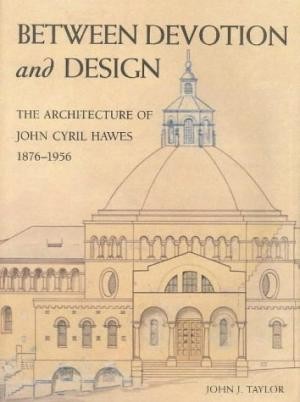ARCHITECTURE WEST AUSTRALIANA
First Edition. SCARCE. Sensitive to the elements of the environment and the different cultures within which he worked, architect John Cyril Hawes developed an idiosyncratic and imaginative style. This was particularly evident in his use of Arts and Crafts, Romanesque, and modernist design elements. Extensively illustrated with reproductions of Hawes’ designs, buildings, paintings and sketches, this book provides revealing insights into Hawes’ varied works, from towering cathedrals, to country schools. Winner of the Australian Christian Book of the Year Award. xxii, 406 p. : ill., plans ; 30 cm. Illustrated Architecture / General
Architecture / Individual Architects & Firms / General Religion / Clergy #0718R/170624
(Small closed tear to top of d/w edge, presentation inscription on fep.)
In Rome Hawes met Bishop William Bernard Kelly from Western Australia and was recruited for his Geraldton diocese. The dual role of outback missionary and architect with a commission to design a cathedral appealed strongly to Hawes’s two major enthusiasms. Arriving in Geraldton in November 1915, he took up a temporary appointment in the Murchison goldfields parish of Mount Magnet and Cue, but started work on his Geraldton cathedral next June. By August 1918 the nave was opened for services but the Cathedral of St Francis Xavier was not completed until 1938, owing to lack of funds and the hostility of Dr Richard Ryan who succeeded Bishop Kelly in 1923. The cathedral is Hawes’s most important building: frankly eclectic, a mixture of Romanesque and Californian Spanish Mission styles, but with a roughcast simplicity and dignity totally in harmony with the surroundings.
Of Hawes’s other buildings in Western Australia, the most interesting include his highly individual parish church of Our Lady of Mount Carmel, Mullewa, again largely Romanesque and built of local stone mainly through the architect’s own labours, and the adjoining priest’s house (1927). There are also churches at Morawa (1932), Carnarvon (1934), Northampton and the Utakarra cemetery chapel (1935), and Perenjori (1936); and he designed chapels at Yalgoo, Bluff Point, Nanson and Melangatta homestead.
